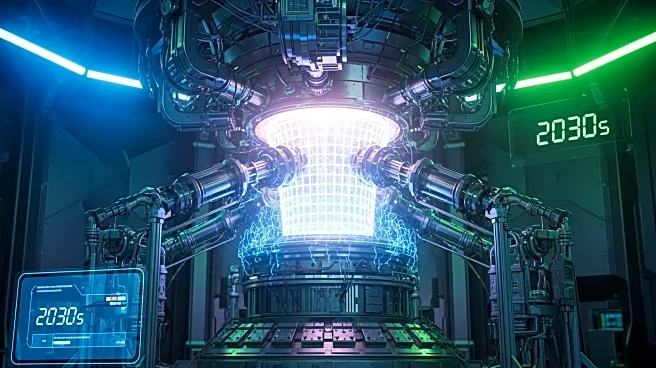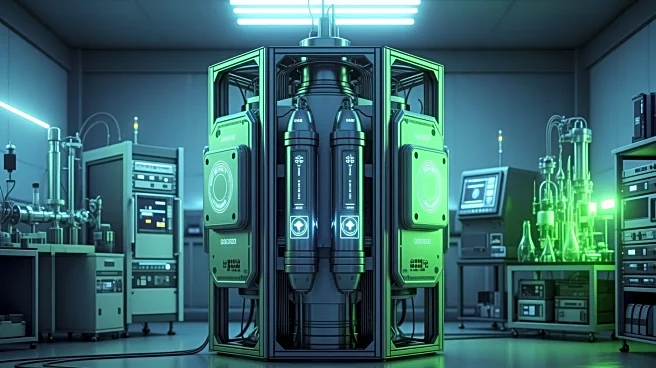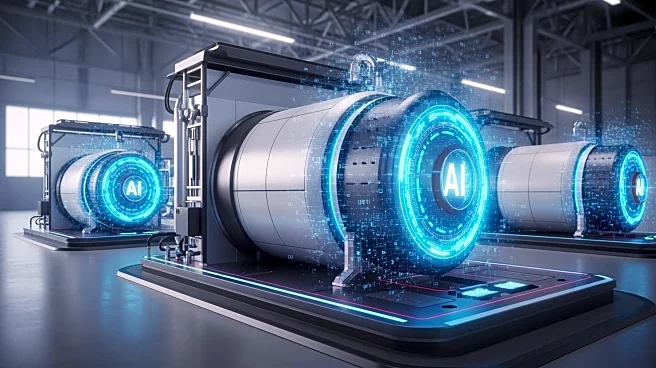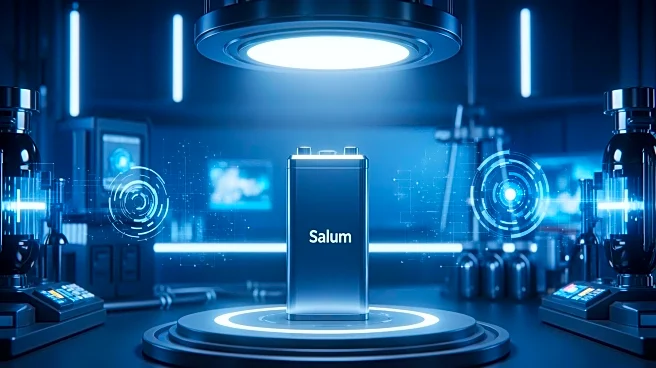What's Happening?
The U.S. Department of Energy (DOE) has released a comprehensive roadmap for nuclear fusion, aiming for private-sector deployment in the 2030s. The roadmap outlines strategies to overcome barriers in six
core areas: structural materials, plasma-facing components, confinement approaches, fuel cycle and tritium processing, blankets and fusion plant engineering, and system integration. A significant challenge identified is the degradation of materials due to fusion neutrons, which impacts the economics and safety of fusion energy. The DOE plans to establish test stands and design large-scale facilities in the next few years, leveraging advancements in artificial intelligence and superconducting magnet technology to enhance plasma stability.
Why It's Important?
Nuclear fusion holds the promise of providing a clean and virtually limitless energy source, which could significantly impact the U.S. energy landscape. The DOE's roadmap is crucial for guiding the development and commercialization of fusion technology, potentially reducing reliance on fossil fuels and contributing to climate change mitigation. The involvement of major utilities and private companies, such as Commonwealth Fusion Systems, underscores the growing confidence in fusion's viability. Successful deployment could lead to economic benefits, job creation, and a shift towards sustainable energy solutions.
What's Next?
The DOE's roadmap anticipates the commencement of nuclear operations for early generation power plants within five to ten years. The public sector will focus on developing large-scale integration facilities and neutron materials testing platforms. The private sector, including companies in the DOE's Milestone-Based Fusion Development Program, will continue to advance fusion technology, with Commonwealth Fusion Systems expected to produce net fusion energy by 2026. The roadmap's flexibility allows for adaptation to technological advancements and changes in the private sector, ensuring continued investment in science and technology gaps.
Beyond the Headlines
The pursuit of nuclear fusion raises ethical and environmental considerations, particularly regarding the management of fusion byproducts and the long-term sustainability of fusion plants. The roadmap's emphasis on material resilience and safety highlights the need for ongoing research to address these challenges. Additionally, the collaboration between public and private sectors will be critical in navigating regulatory hurdles and ensuring the responsible development of fusion technology.











